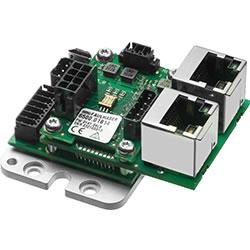Augmented Reality (AR) in Manufacturing , Industry 4.0 and Beyond
“Augmented Reality (AR) in Manufacturing Market is mainlydriven by an increase in the development and adoption of AR capable wearables and systems such as Microsofts Hololens and the Oculus Riftâ€
Augmented reality (AR) is a term used to identify a set of technologies that allow the view of the real world environment to be augmented or enhanced by computer-generated elements or objects. The visual perception of elements in the physical environment is enhanced through the use of computing devices. An emerging area of AR applications is the manufacturing industry, which is concerned with the process of transforming raw materials into finished goods with added value. Manufacturing companies need real-time information exchanges at various stages of the product lifecycle such as design, prototyping, production, assembly, maintenance/repair, etc.
Manufacturing enterprises are using augmented reality in various applications. The technology is being used in assistive systems that provide complex assembly instructions using head-mounted displays (HMDs). Augmented reality is also used in the training and development of workers to address an acute skill gap by proving expert assistance and support in manufacturing operations through telepresence solutions. Moreover, the technology is used in safety inspection and error detection and comprehensive quality assurance checks. For instance, AR is used in Porshes quality assurance processes for its car manufacturing plant. AR can be used in quality assurance in order to perform real-time analysis of parts and assembled components, leading to the possibility of the automation of QA processes.
The augmented reality in the manufacturing market is primarily driven by an increase in the development and adoption of AR capable wearables and systems such as Microsofts Hololens andthe Oculus Rift. These products are capable of running on portable general purpose devices such as tablets or smartphones and dedicated hardware such as smart glasses and head mounted displays.
Augment reality devices have been known to be used in the manufacturing processes of major players such as Boeing. Companies use AR technology for improving their wire assembly process with AR headsets, which allow employees to issue voice commands conveniently and view information quickly. Using AR devices has reduced Boeings wire assembly process time by 25% and has lowered errors to nearly 0%. Ford notably has used the Microsoft HoloLens AR headset in order to overhaul its design process, which has allowed the companys designers to be more creative, collaborate better, improve decision making, as well as work quicker.
The application of augmented reality devices in the manufacturing sector has faced certain bottlenecks such as complexity in the development of AR algorithms, portability issues due to the size of devices, limited computing capacities of devices, power requirements, and the deployment of hardware on a large scale. The reduced portability of AR devices raise concerns over the long-term use of such devices, which have been reported to cause stress and strain to users. These factors are likely to restrain the market.
Get More Information About Augmented Reality (AR) in Manufacturing by TMR
Featured Product

